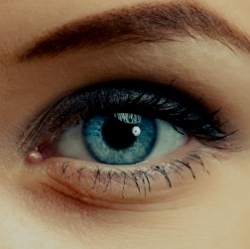
To an unfortunate subpopulation of people, virtual reality’s side effects are no joke. The eyestrain and stomach upset can be so severe that Gabe Newell, the president and co-founder of gaming heavyweight Valve, dubbed current headsets as the “world’s best motion sickness inducers.”
It’s certainly not a fringe problem. Based on past US Navy studies using VR-like flight simulators, the fraction of affected individuals can be as high as 40% depending on the nature of the task. Even worse, the more active the user is and the longer the user stays in the virtual world, the more likely they will become very, very sick.
With Google Cardboard and Samsung Gear VR already in limited release, and the highly anticipated Oculus Rift poised to hit the market early next year, companies are furiously working to solve VR’s simulator sickness.
Valve, for example, presented a motion-tracking system at this year’s Gaming Developers Conference that orients users by reproducing their real-world motions using spinning laser beams. In conjunction with the HTC Vive headset, the tech, called Lighthouse, is purported to obliterate the dreaded nausea problem.
Meanwhile, others, like Fove and Cloudhead Games, are working the problem from different angles, the former with advanced eye and head tracking and the latter with in-game movements more tailored to VR.
Then there’s Magic Leap, the secretive augmented reality (AR) company that shot to fame after receiving $542 million from a team of investors led by Google. This March in an interview with Wired, Magic Leap’s CEO Rony Abovitz tantalizingly hinted that their technology will use “dynamic digital light field signal” to produce “the closest replication to what the real world is doing as it interacts with your eye-brain system.”
Magic Leap may be in stealth mode, but others, who also believe that light field technology is the solution, certainly aren’t. At SIGGRAPH 2015, an annual conference in Los Angeles last week that promotes the latest in computer graphics and interactive techniques, a team from the Stanford Computational Imaging Group presented a next-gen VR headset prototype that also relied on light field signals to generate virtual objects that mimic how our eyes interact with the real 3D world.
To be clear, the Stanford prototype does not claim to solve VR sickness once and for all. Other issues such as resolution, high dynamic range and latency can also induce the dreaded nausea.
Then for a smaller set of people there’s the traditional motion sickness problem, that is, a discrepancy between what the eyes see versus what the inner ear’s vestibular system experiences. A classic example of this is reading in a moving car, where the eyes are focused on a static image but the body is rocking along with the wheels. It’s something very interesting but difficult to deal with, says Huang.
Even so, experts are incredibly hopeful. Although new problems keep popping up, says Wetzstein, that’s not necessarily a bad thing. VR is near, and “it will be transformative.”
